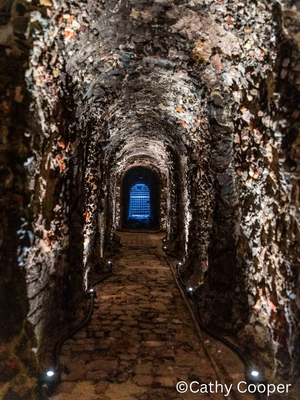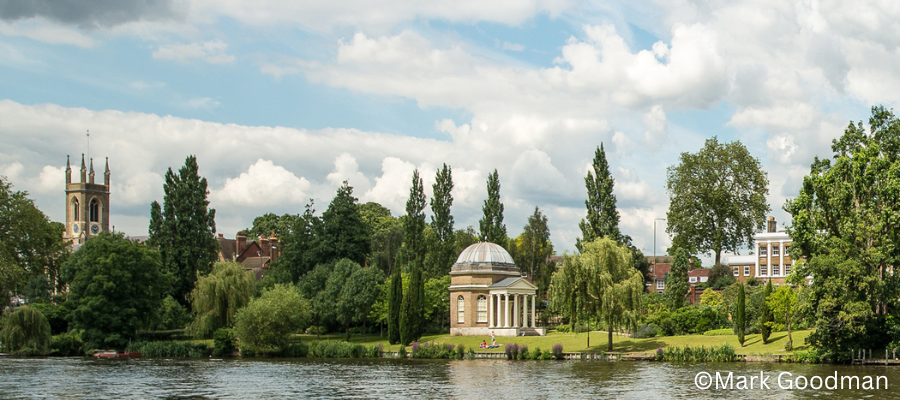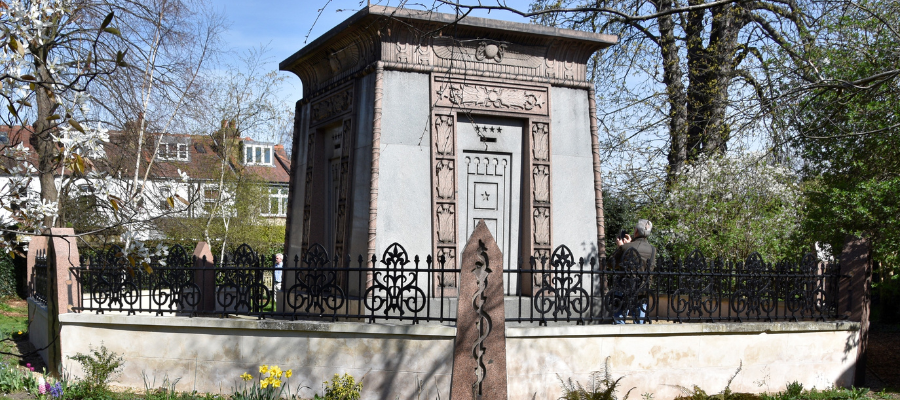February is the perfect time to fall in love with Richmond upon Thames, and we have just the thing to help you do it: Our hidden gems.
From Horace Walpole's little Gothic castle - Strawberry Hill House to Marble Hill House, the home of the mistress of George II and servant to the Queen..
Scroll down to find out more about our favorite hidden gems! 👇 #VisitRichmond
Strawberry Hill House & Garden
.png)
 Horace Walpole’s little Gothic castle internationally famous as Britain’s finest example of Georgian Gothic Revival architecture. Only 15 minute walk from Twickenham Station or a short bus ride from Richmond Station this extraordinary place will inspire you from the moment you step inside.
Horace Walpole’s little Gothic castle internationally famous as Britain’s finest example of Georgian Gothic Revival architecture. Only 15 minute walk from Twickenham Station or a short bus ride from Richmond Station this extraordinary place will inspire you from the moment you step inside.
Did you know that Horace Walpole was a pivotal figure in 18th Century society, literature, art and architecture? He was the son of Sir Robert Walpole, Britain’s first Prime Minister, author of ‘The Castle of Otranto’, the world’s first gothic novel and founder of Strawberry Hill House & Garden and its vast collection of treasures
What better way to learn about the history and atmosphere of the house than seeing over 50 Old Master paintings on from Dulwich Picture Gallery and a further eight works from a private English collection. Each of these painting will help to recreate the atmosphere and history of Strawberry Hill House & Garden as it would have appeared over 250 years ago.
Don't miss it! Book your visit now to Britain's finest example of Georgian Gothic castle.
Marble Hill House
Marble Hill was built in the 1720s for Henrietta Howard, mistress of King George II when he was Prince of Wales, as a retreat from court life. Both house and garden were designed with advice from the most fashionable gentlemen of early Georgian England. Saved from destruction and development by an Act of Parliament in 1902, Marble Hill is the last complete survivor of the elegant villas and gardens that once bordered this part of the Thames. Explore the beautiful parkland and take in the idyllic landscape with family and friends.
Marble Hill House reopens to the public in April from Wednesday to Sunday and is free to visit.
Garrick's Temple to Shakespeare
Garrick's Temple to Shakespeare on the Riverside at Hampton was built by the great 18th century actor-manager David Garrick in 1756 to celebrate the genius of William Shakespeare.
Interestingly, David Garrick not only used the temple to house his extensive collection of Shakespearean relics but also to entertain his family and friends. The temple now houses an exhibition about Garrick himself, featuring a number of reproductions of works by major 18th century artists, including Gainsborough, Reynolds, Hogarth and Zoffany.
The Temple is open to the public on Sunday afternoons (14:00 - 17:00) from Sunday 26 March 2023 until Sunday 29th October 2023. Admission is free.
Kew Palace
Britain’s smallest royal palace and George III's private retreat. This beautiful little palace was originally built as a fashionable mansion for wealthy London silk merchant, Samuel Fortrey in 1631.
Between 1727-1760 little Kew attracted the eyes of George II and Queen Caroline, thinking it's a perfect lodging for their three eldest daughters. After them, several generations of Georgian royalty used Kew and nearby Richmond Lodge as weekend retreats from an intensely public life in town.
Kew reflects the intimate personal and domestic life of Georgian kings and queens for much of the 18th century. Today the interior of this tiny, atmospheric palace tells the powerful story of George III, his mental illness and the members of his family who lived and died there.
Now Kew Palace is free to enter with your paid admission to Kew Gardens. Door reopen to the public on 3 April 2023, so there is plenty of time for you to plan your trip and discover the story of King George III.
Turner's House
 Sandycombe Lodge was built in 1813 to the designs of England’s great landscape painter, J.M.W. Turner; working here as his own architect to create a quiet retreat for himself, away from the pressures of the London art world. It also provided a home for his father, old William, in retirement from his trade as a barber and wigmaker in Covent Garden.
Sandycombe Lodge was built in 1813 to the designs of England’s great landscape painter, J.M.W. Turner; working here as his own architect to create a quiet retreat for himself, away from the pressures of the London art world. It also provided a home for his father, old William, in retirement from his trade as a barber and wigmaker in Covent Garden.
Book your visit now and discover plenty of fascinating stories about J.M.W. Turner and his family. The house is now open for visits until 2 July 2023.
Kilmorey Mausoleum
Kilmorey Mausoleum was built in 1854 by the second Earl of Kilmorey, Frances Jack Needham, to house the tomb of his beloved mistress, Priscilla Hoste. It was originally erected on a plot that he had secured at Brompton Cemetery, but it was later moved twice so that he could keep Priscilla’s tomb near to where he was living. An interesting fact about the pink and grey Egyptian style mausoleum is that it cost over £30,000 which is approximately £4 million by today’s prices.
Nonetheless, when Priscilla became ill in 1851 with a terminal heart condition, Kilmorey began preparing for her burial and in 1853 wrote to Brompton Cemetery regarding a select plot. It took over a year for the details to be settled. Than an architect named, Mr. H.E. Kendall, designed the £30,000 mausoleum to fit the circular plot at Brompton Cemetery, which measured 1,963 square feet. The shape of the building has similarities with the shrines at Egyptian Temples, the place where a treasured image of a god was installed.
When Priscilla died in October 1854, her coffin was inscribed with the words “the beloved of Francis Jack Earl of Kilmorey”.
The Kilmorey Mausoleum is only open for a select number of days per year. If you are interested to organise a group visit, please contact Habitats & Heritage. A minimum of eight people is required for a visit and that a donation to Habitats & Heritage is considered to help maintain the site.
Alexander Pope's Grotto
Alexander Pope’s Grotto is the last remaining part of his famous villa and gardens, which he built in 1720 on the banks of the Thames at Twickenham.  A mine of minerals gathered from all parts of the world, it is listed as Grade 2* and as Heritage at Risk is considered as ‘Of outstanding national importance’. It is loaded with significance for British culture and for the birth of the English Landscape Garden Movement, described by Mavis Batey as ‘A seminal event in in the 18th century search to establish man’s relationship to nature’.
A mine of minerals gathered from all parts of the world, it is listed as Grade 2* and as Heritage at Risk is considered as ‘Of outstanding national importance’. It is loaded with significance for British culture and for the birth of the English Landscape Garden Movement, described by Mavis Batey as ‘A seminal event in in the 18th century search to establish man’s relationship to nature’.
Demolished in 1808, the villa was replaced and the property became the subject of much redevelopment over the following 200 years. In 1996 St James’s Independent School for Boys acquired the estate, remaining for 14 years, during which time a Charitable Trust was created to preserve the grotto. The current owner, Radnor House School, arrived in 2010 and has committed wholeheartedly to the project of conservation and to the activities surrounding it.
Since the Trust started opening the grotto regularly to the public in 2016 approximately 3000 people have explored its passages and minerals, and its popularity continues, even in its present shabby condition, drawing Londoners, students and enthusiasts from all over the world.
This concludes our much loved hidden gems that play such big part in the history of Richmond upon Thames. Each of the attraction has it's own fascinating history and is beautiful in their own way. If you are looking to escape the busy city life, visit Richmond upon Thames for a day and explore our beautiful attractions and grab a breakfast, lunch or dinner in some of our delicious local businesses.
To keep up to date with all the latest promotions and events subscribe to our E-Newsletter and check out the February What's On for more things to do in Richmond upon Thames when you prepare your visit.
Related
Comments
Artist in Richmond Love the article. So much amazing stuff to do in Richmond. I also came across this local artist site, for those of you who want to support upcoming local artists. Have a look at www.creativerichmond.co.uk It's really important to support local! Denial This is a cool way to learn something new and relax. While in college, many of my friends and I simply placed an order on the website https://collegepaper.net/buy-research-paper-online/ and went exploring the area to get a reboot
Comments are disabled for this post.



 to add an item to your Itinerary basket.
to add an item to your Itinerary basket.


.png)

.png)
(1).png)


